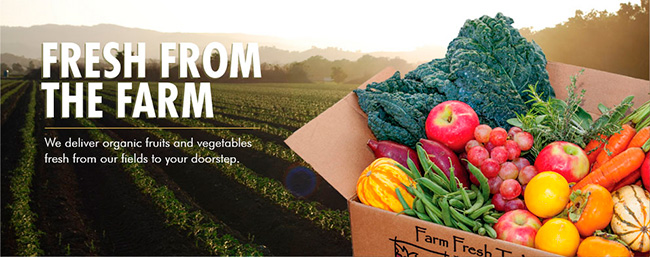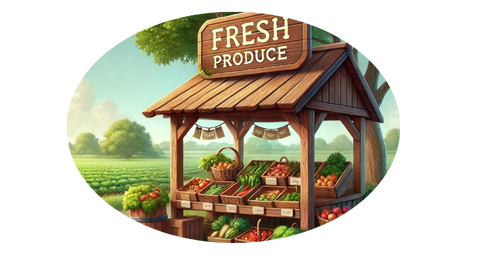
Farm Fresh on a Budget: How to Save Money While Eating Healthy

Farm Fresh on a Budget: How to Save Money While Eating Healthy
Eating fresh, healthy food doesn’t have to break the bank. Many people believe that farm-fresh produce and organic groceries are expensive, but with the right strategies, you can enjoy wholesome meals without overspending. In this guide, we’ll explore practical ways to save money while maintaining a nutritious diet.
1. Shop Seasonally for the Best Deals
One of the best ways to save money on farm-fresh food is to buy produce that’s in season. Seasonal fruits and vegetables are more abundant, making them cheaper and fresher. Local farmers’ markets often have great deals on in-season items, and you can stock up when prices are low.
Action Plan : Create a meal plan based on seasonal produce to maximize savings and variety in your diet.
2. Visit Farmers’ Markets and Local Farms
Farmers’ markets offer fresh produce at competitive prices, and local farms may have direct-to-consumer programs like Community Supported Agriculture (CSA) subscriptions. Many farmers offer discounts on bulk purchases or “ugly” produce that is just as nutritious but slightly misshapen.
Action Plan : Visit the market towards closing time when vendors may offer discounts to clear their stock.
3. Buy in Bulk and Preserve
Purchasing fresh produce in bulk can help you save money, especially if you freeze, dry, or can your extras. Freezing berries, blanching vegetables, or making homemade sauces ensures you have farm-fresh options year-round.
Action Plan: Invest in a vacuum sealer or airtight containers to maintain freshness for an extended period.
4. Grow Your Own Food
Starting a small home garden can significantly cut grocery costs. Even if you don’t have a large backyard, you can grow herbs, tomatoes, lettuce, and other vegetables in small spaces like balconies or windowsills.
Action Plan: Choose easy-to-grow plants like zucchini and peppers to get started with minimal effort.
5. Plan Meals and Minimize Waste
Careful meal planning helps reduce food waste and saves money. Plan your meals around what’s on sale and use leftovers creatively. Making soups, stir-fries, or smoothies with surplus ingredients ensures nothing goes to waste.
Action Plan: Store perishables properly to extend their shelf life, and compost scraps to enrich your garden soil.
6. Compare Prices and Use Discounts

Compare prices between grocery stores, farmers’ markets, and online vendors to find the best deals. Many stores offer discounts on organic or farm-fresh items, and some provide loyalty programs with additional savings.
Action Plan: Use cashback apps and digital coupons to save even more on fresh groceries.
7. Choose Affordable Protein Sources
Meat can be expensive, but you can save money by opting for alternative protein sources like beans, lentils, eggs, and tofu. When buying meat, look for sales, purchase in bulk, or choose less expensive cuts that can be slow-cooked for tenderness.
Action Plan: Incorporate plant-based meals a few times a week to cut costs and boost your health.
8. Cook More at Home
Eating out is costly, and pre-packaged meals often come with hidden additives. Cooking from scratch with farm-fresh ingredients ensures you control what goes into your meals while saving money.
Action Plan: Batch cook and freeze meals for quick, healthy dinners during busy days.
Final Thoughts
Eating farm-fresh and healthy on a budget is possible with a little planning and smart shopping. By incorporating these strategies into your routine, you can enjoy nutritious meals without overspending. Whether shopping seasonally, growing your own produce, or meal prepping efficiently, small changes can lead to significant savings.
Are you ready to make the switch to healthier, budget-friendly eating? Start today and reap the benefits of fresh, affordable food!
